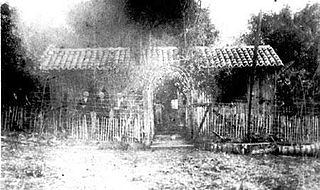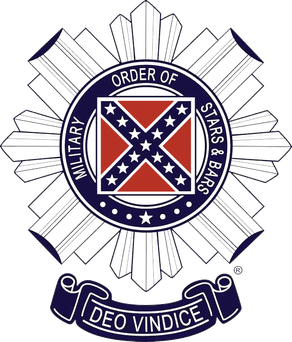 W
WThe Thirteenth Amendment to the United States Constitution abolished slavery and involuntary servitude, except as punishment for a crime. The amendment was passed by Congress on January 31, 1865, and ratified by the required 27 of the then 36 states on December 6, 1865 and proclaimed on December 18. It was the first of the three Reconstruction Amendments adopted following the American Civil War.
 W
WThe Fourteenth Amendment to the United States Constitution was adopted on July 9, 1868, as one of the Reconstruction Amendments. Arguably one of the most consequential amendments, it addresses citizenship rights and equal protection under the law and was proposed in response to issues related to former slaves following the American Civil War. The amendment was bitterly contested, particularly by the states of the defeated Confederacy, which were forced to ratify it in order to regain representation in Congress. The amendment, particularly its first section, is one of the most litigated parts of the Constitution, forming the basis for landmark Supreme Court decisions such as Brown v. Board of Education (1954) regarding racial segregation, Roe v. Wade (1973) regarding abortion, Bush v. Gore (2000) regarding the 2000 presidential election, and Obergefell v. Hodges (2015) regarding same-sex marriage. The amendment limits the actions of all state and local officials, and also those acting on behalf of such officials.
 W
WThe Fifteenth Amendment to the United States Constitution prohibits the federal government and each state from denying a citizen the right to vote based on that citizen's "race, color, or previous condition of servitude." It was ratified on February 3, 1870, as the third and last of the Reconstruction Amendments.
 W
WThe commemoration of the American Civil War is based on the memories of the Civil War that Americans have shaped according to their political, social and cultural circumstances and needs, starting with the Gettysburg Address and the dedication of the Gettysburg cemetery in 1863. Confederates, both veterans and women, were especially active in forging the myth of the Lost Cause of the Confederacy.
 W
WThe Confederados were some 10,000 to 20,000 Confederates who moved to Brazil, chiefly to the state of São Paulo, from the Southern United States after the American Civil War. Although many eventually returned to the United States after Reconstruction, some remained and descendants of Confederados can be found in many cities throughout Brazil. The city of Americana in Brazil was founded by these emigrants.
 W
WConfederate Memorial Hall Museum is a museum located in New Orleans which contains historical artifacts related to the Confederate States of America (C.S.A.) and the American Civil War. It is historically also known as "Memorial Hall". It houses the second-largest collection of Confederate Civil War items in the world, behind the American Civil War Museum in Richmond, Virginia. The museum has been advertised as Louisiana's Civil War Museum and as Louisiana's Oldest Museum.
 W
WConfederate patriotism refers to the patriotism of people towards the historic Confederate States of America located in what is now the southern United States. This patriotism arose as a result of the rise of an autonomous Confederate identity after the escalation of dispute between United States Northerners and Southerners over states' rights and slavery, Southerners identified themselves as a separate group of people from the people associated with the Union whom Southerners referred to as "Yankees".
 W
WFlaggers are one of the several neo-Confederate groups active in the Southern United States. Flaggers usually operate at the state level. Their primary purpose is to make the Confederate battle flag as visible as possible.
 W
WIn 1868, the Democrats nominated former New York Governor Horatio Seymour for President and Francis Preston Blair Jr. for Vice President. The Seymour-Blair ticket ran on a platform which supported national reconciliation and states' rights, opposed Reconstruction, and opposed both Black equality and Black suffrage. Meanwhile, the Republican presidential ticket led by General Ulysses S. Grant benefited from Grant's status as a war hero and ran on a pro-Reconstruction platform. Ultimately, the Seymour-Blair ticket ended up losing to the Republican ticket of General Ulysses S. Grant and House Speaker Schuyler Colfax in the 1868 U.S. presidential election.
 W
WThe Lost Cause of the Confederacy, or simply the Lost Cause, is an American pseudo-historical, negationist ideology that advocates the belief that the cause of the Confederate States during the American Civil War was a just and heroic one. This ideology has furthered the belief that slavery was just and moral, because it brought economic prosperity. The notion was used to perpetuate racism and racist power structures during the Jim Crow era in the American South. It emphasizes the supposed chivalric virtues of the antebellum South. It thus views the war as a struggle primarily waged to save the Southern way of life and to protect "states' rights", especially the right to secede from the Union. It casts that attempt as faced with "overwhelming Northern aggression". At the same time, it minimizes or completely denies the central role of slavery and white supremacy in the build-up to, and outbreak of, the war.
 W
WThe Military Order of the Stars and Bars (MOSB) is a 501(c)(3) charitable organization in the United States based in Woodbridge, Virginia. It is a lineage society founded in 1938 for men who are descended from military officers or political leaders in the Confederate States of America (CSA).
 W
WThe New Virginia Colony was a colonization plan in central Mexico, to resettle ex-Confederates after the American Civil War. The largest settlement was Carlota, approximately midway between Mexico City and Veracruz, although other settlements were planned near Tampico, Monterrey, Cuernavaca, and Chihuahua.
 W
WThe Reconstruction era was the period in American history that lasted from 1863 to 1877 following the American Civil War (1861–65) and is a significant chapter in the history of American civil rights. Reconstruction ended the remnants of Confederate secession and abolished slavery, making the newly freed slaves citizens with civil rights ostensibly guaranteed by three new constitutional amendments. Reconstruction also refers to the attempt to transform the 11 Southern former Confederate states, as directed by Congress, and the role of the Union states in that transformation.
 W
WThe Sons of Confederate Veterans (SCV) is an American nonprofit and charitable organization of male blood-descendants of Confederate veterans headquartered at the Elm Springs in Columbia, Tennessee. The SCV was founded on July 1, 1896, at the City Auditorium in Richmond, Virginia, by R. E. Lee Camp, No. 1, Confederate Veterans. It is known for erecting and maintaining American Civil War memorials and graves, observing Confederate Memorial Day, and encouraging Southern historical study. In recent decades, governors, legislators, courts, corporations, and anti-racism activists have placed new emphasis on the increasingly controversial public display of Confederate symbols—especially after the 2014 Ferguson unrest, the 2015 Charleston church shooting, and the 2020 killing of George Floyd. SCV has responded with its coordinated display of larger and more prominent public displays of the battle flag, some in directly defiant counter-protest.
 W
WThe United Confederate Veterans was an American Civil War veterans' organization headquartered in New Orleans, Louisiana. It was organized on June 10, 1889, by ex-soldiers and sailors of the Confederate States as a merger between the Louisiana Division of the Veteran Confederate States Cavalry Association; N. B. Forrest Camp of Chattanooga, Tennessee; Tennessee Division of the Veteran Confederate States Cavalry Association; Tennessee Division of Confederate Soldiers; Benevolent Association of Confederate Veterans of Shreveport, Louisiana; Confederate Association of Iberville Parish, Louisiana; Eighteenth Louisiana; Adams County (Mississippi) Veterans' Association; Louisiana Division of the Army of Tennessee; and Louisiana Division of the Army of Northern Virginia.
 W
WThe United Daughters of the Confederacy (UDC) is an American hereditary association of Southern women established in 1894 in Nashville, Tennessee. It has been labeled neo-Confederate by the Southern Poverty Law Center, which monitors hate groups and extremists. The stated purposes of the organization include the commemoration of Confederate States Army soldiers and the funding of the erection of memorials to these men. Many historians have described the organization's portrayal of the Confederate States of America (CSA), along with its promotion of the Lost Cause movement, as advocacy for white supremacy, and have asserted that promotion of the Confederate tradition has been led by the UDC. Until recent decades, the UDC was also involved in building monuments to commemorate the Ku Klux Klan.